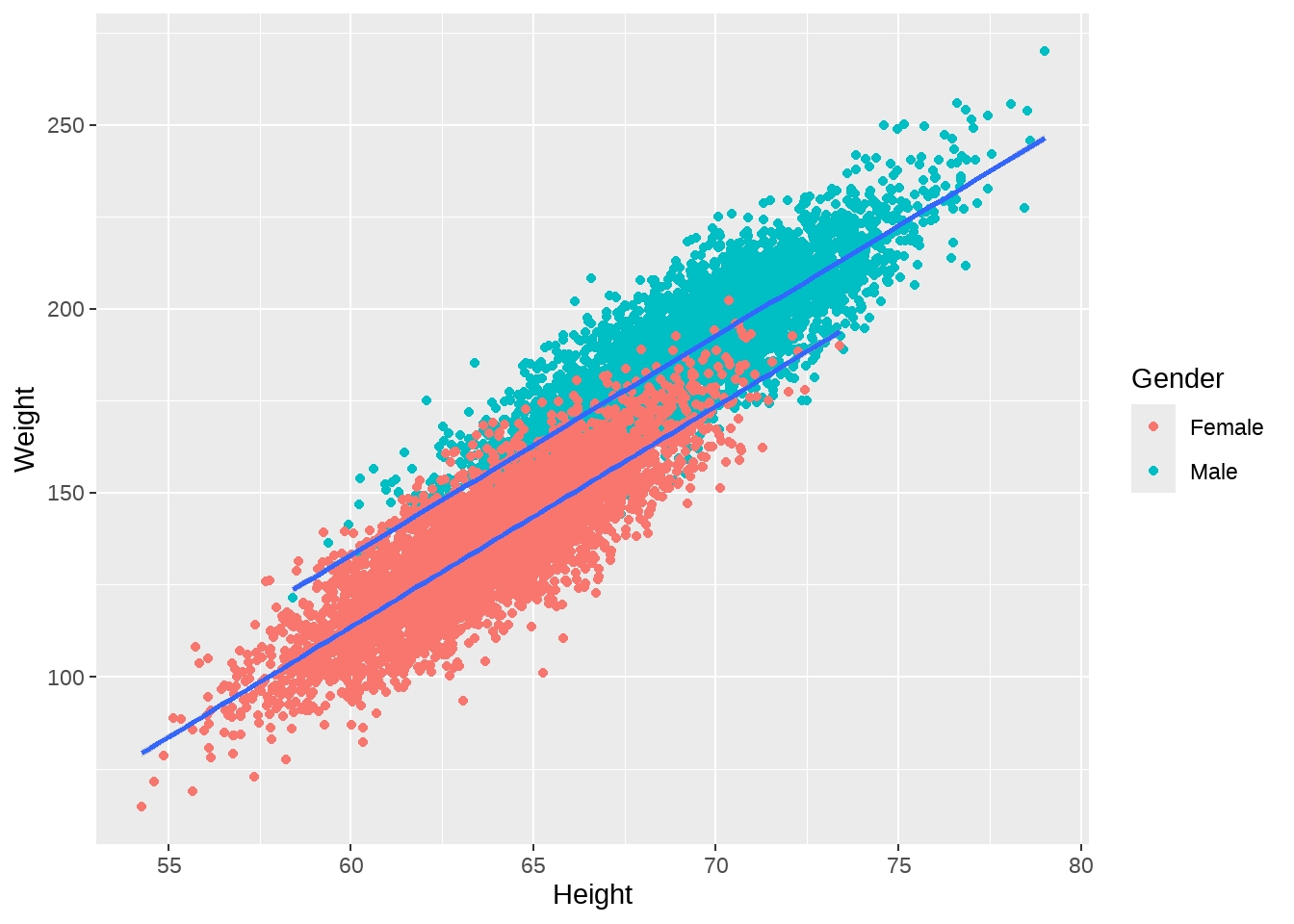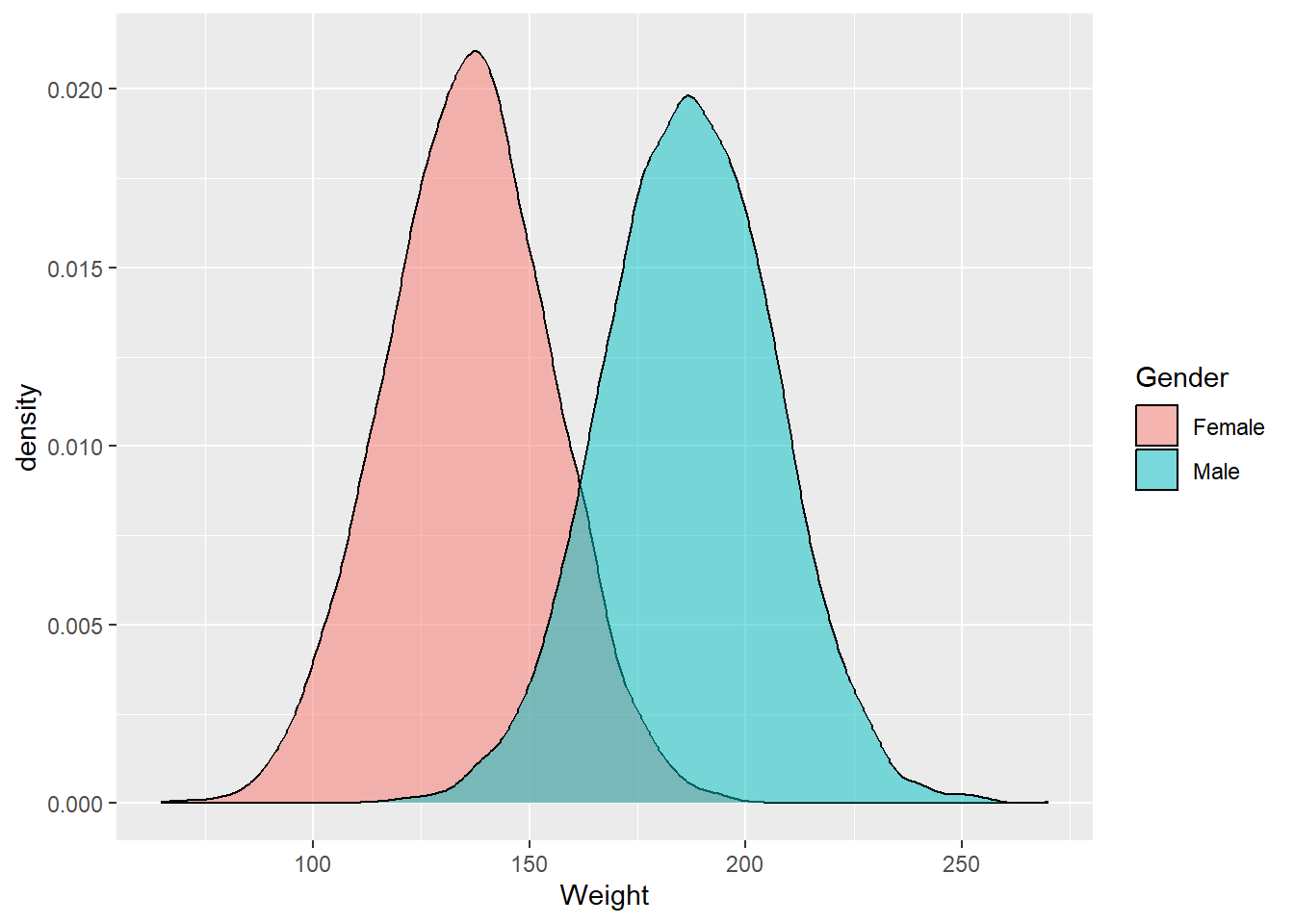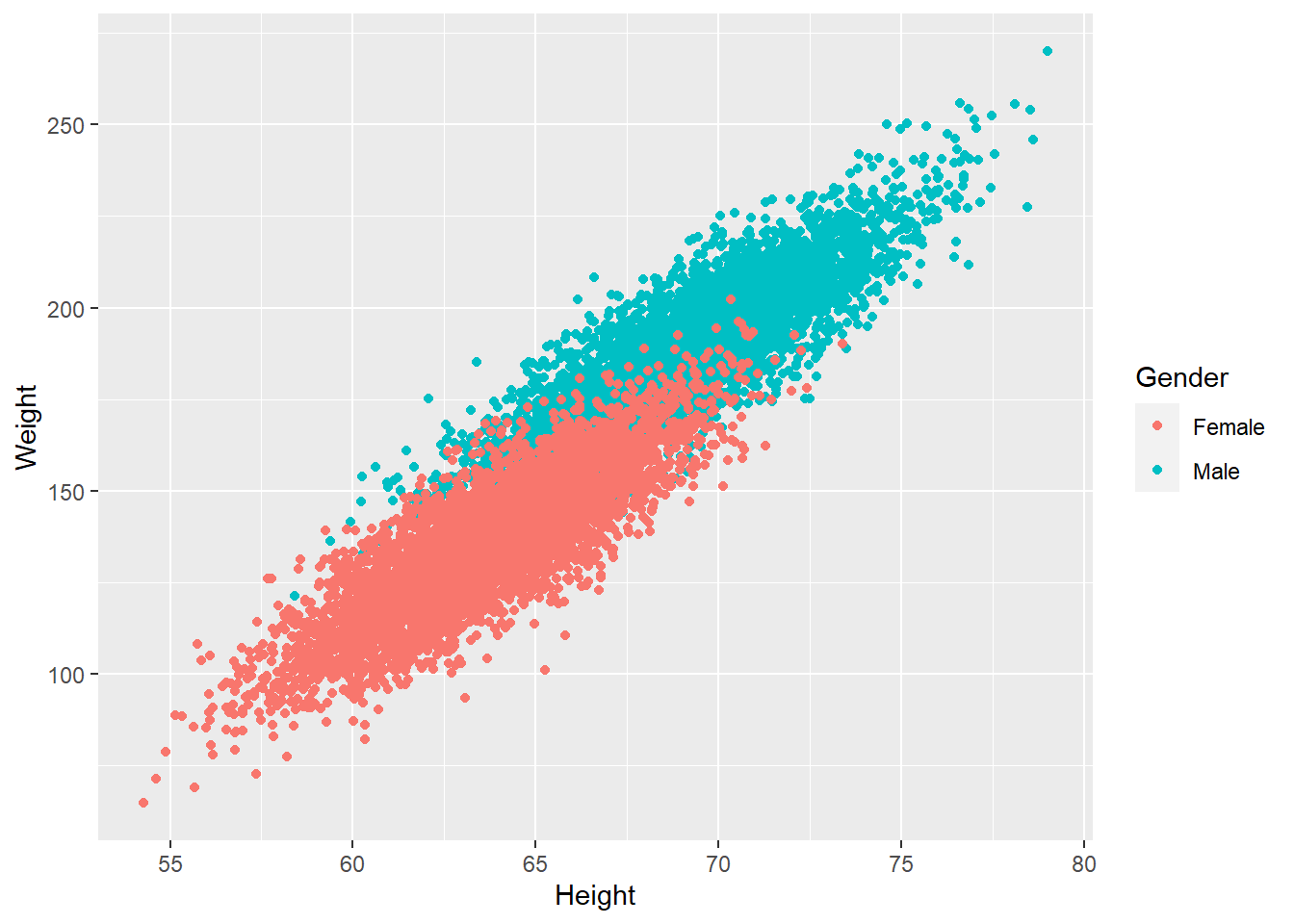第 82 章 探索性数据分析-身高体重
82.1 案例分析
这是一份身高和体重的数据集
## # A tibble: 10,000 × 3
## Gender Height Weight
## <chr> <dbl> <dbl>
## 1 Male 73.8 242.
## 2 Male 68.8 162.
## 3 Male 74.1 213.
## 4 Male 71.7 220.
## 5 Male 69.9 206.
## 6 Male 67.3 152.
## 7 Male 68.8 184.
## 8 Male 68.3 168.
## 9 Male 67.0 176.
## 10 Male 63.5 156.
## # ℹ 9,990 more rows## # A tibble: 1 × 3
## Gender Height Weight
## <int> <int> <int>
## 1 0 0 082.2 可视化
82.2.1 画出不同性别的身高分布
常规答案
d %>%
ggplot(aes(x = Height, fill = Gender)) +
geom_density(alpha = 0.5)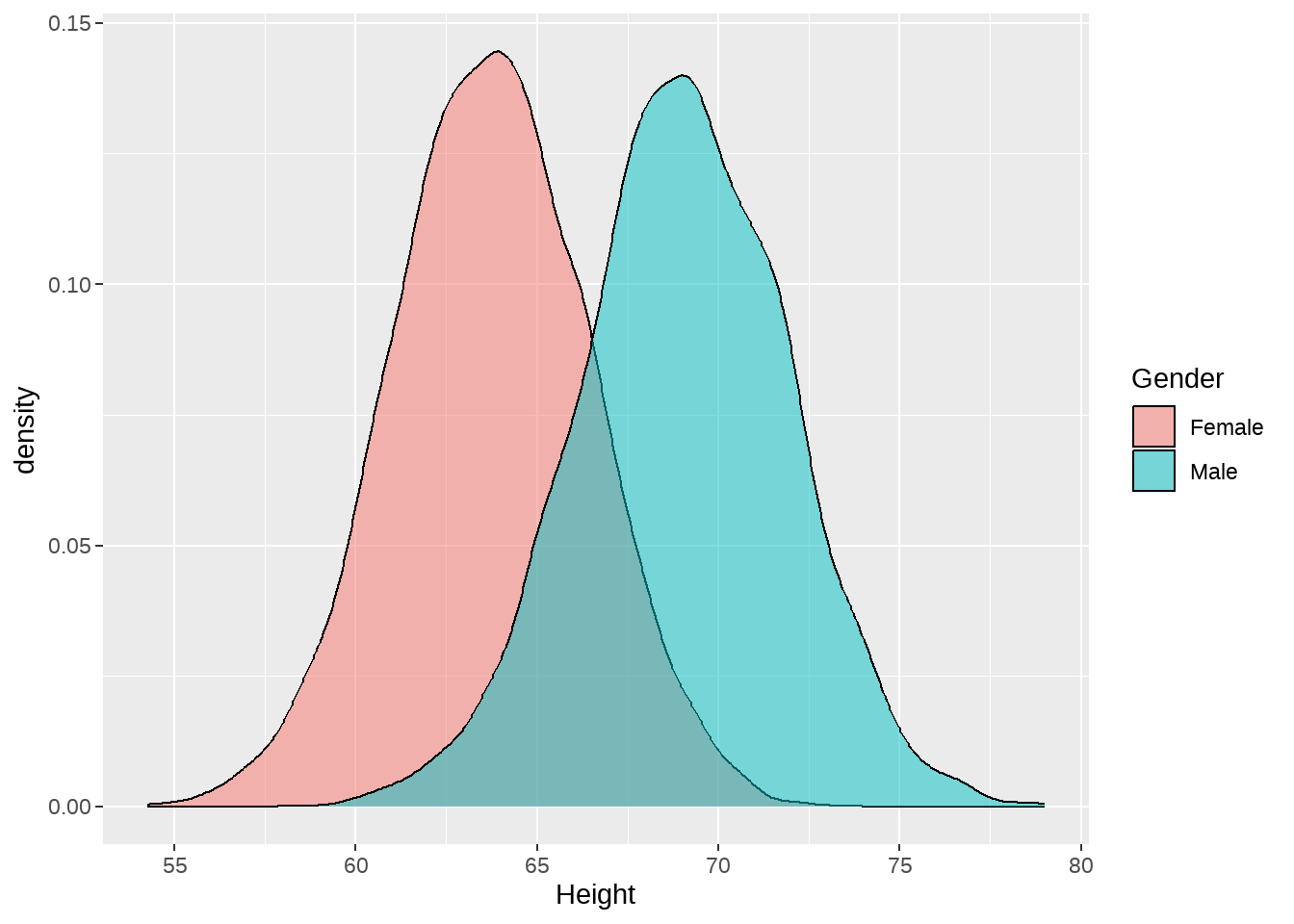
d %>%
ggplot(aes(x = Height, fill = Gender)) +
geom_density(alpha = 0.5) +
facet_wrap(vars(Gender))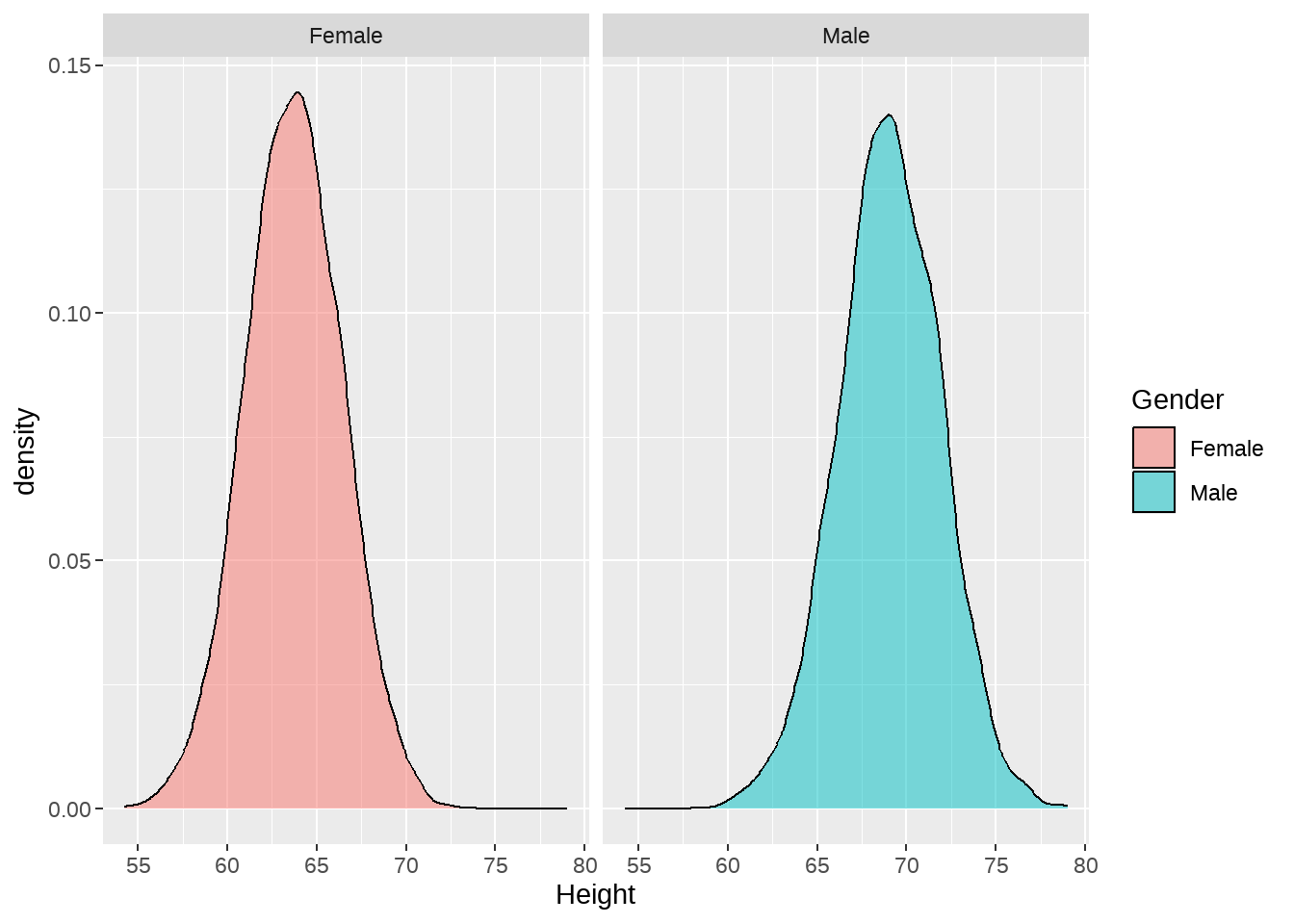
82.3 来点高级的
刚才我们看到了分面的操作,全局数据按照某个变量分组后,形成的若干个子集在不同的面板中分别展示出来。
这种方法很适合子集之间对比。事实上,我们看到每个子集的情况后,还很想知道全局的情况,以及子集在全局中的分布、状态或者位置。也就说,想对比子集和全局的情况。
所以我们期望(子集之间对比,子集与全局对比)。
具体方法:用分面的方法高亮展示子集,同时在每个分面上添加全局(灰色背景)
- 第一步,先把子集用分面的方法,分别画出来
d %>%
ggplot(aes(x = Height)) +
geom_density() +
facet_wrap(vars(Gender))- 第二步,添加整体的情况作为背景图层。因为第一步用到了分面,也就说会分组,但我们希望整体的背景图层不受分面信息影响,或者叫背景图层不需要分组,而是显示全部。也就说,要保证每个分面面板中的背景图都是一样的,因此,在这个geom_denstiy()图层中,构建不受facet_wrap()影响的数据,即删掉data的分组列。
d %>%
ggplot(aes(x = Height)) +
geom_density(
data = d %>% select(-Gender)
) +
geom_density() +
facet_wrap(vars(Gender))- 第三步,y轴的调整,我们希望保持密度的形状,同时希望y轴不用比例值而是用具体的count个数,这样整体和局部能放在一个标度下,
d %>%
ggplot(aes(x = Height, y = after_stat(count))) +
geom_density(
data = d %>% select(-Gender)
) +
geom_density() +
facet_wrap(vars(Gender))- 第四步, 配色。 配色网站选颜色
“Male”, “Female” 是Gender已经存在的分组。另外,我们在背景图层,新增了一个组”all people”,这样,整个图就有三个分组(三个color组),那么,我们可以在scale_fill_manual中统一设置和指定。
density_colors <- c(
"Male" = "#247BA0",
"Female" = "#F25F5C",
"all people" = "grey85"
)
d %>%
ggplot(aes(x = Height, y = after_stat(count))) +
geom_density(
data = df %>% select(-Gender),
aes(fill = "all people", color = "all people")
) +
geom_density(aes(color = Gender, fill = Gender)) +
facet_wrap(vars(Gender)) +
scale_fill_manual(name = NULL, values = density_colors) +
scale_color_manual(name = NULL, values = density_colors) +
theme_minimal() +
theme(legend.position = "bottom")82.3.1 完整代码
density_colors <- c(
"Male" = "#247BA0",
"Female" = "#F25F5C",
"all people" = "grey80"
)
scales::show_col(density_colors)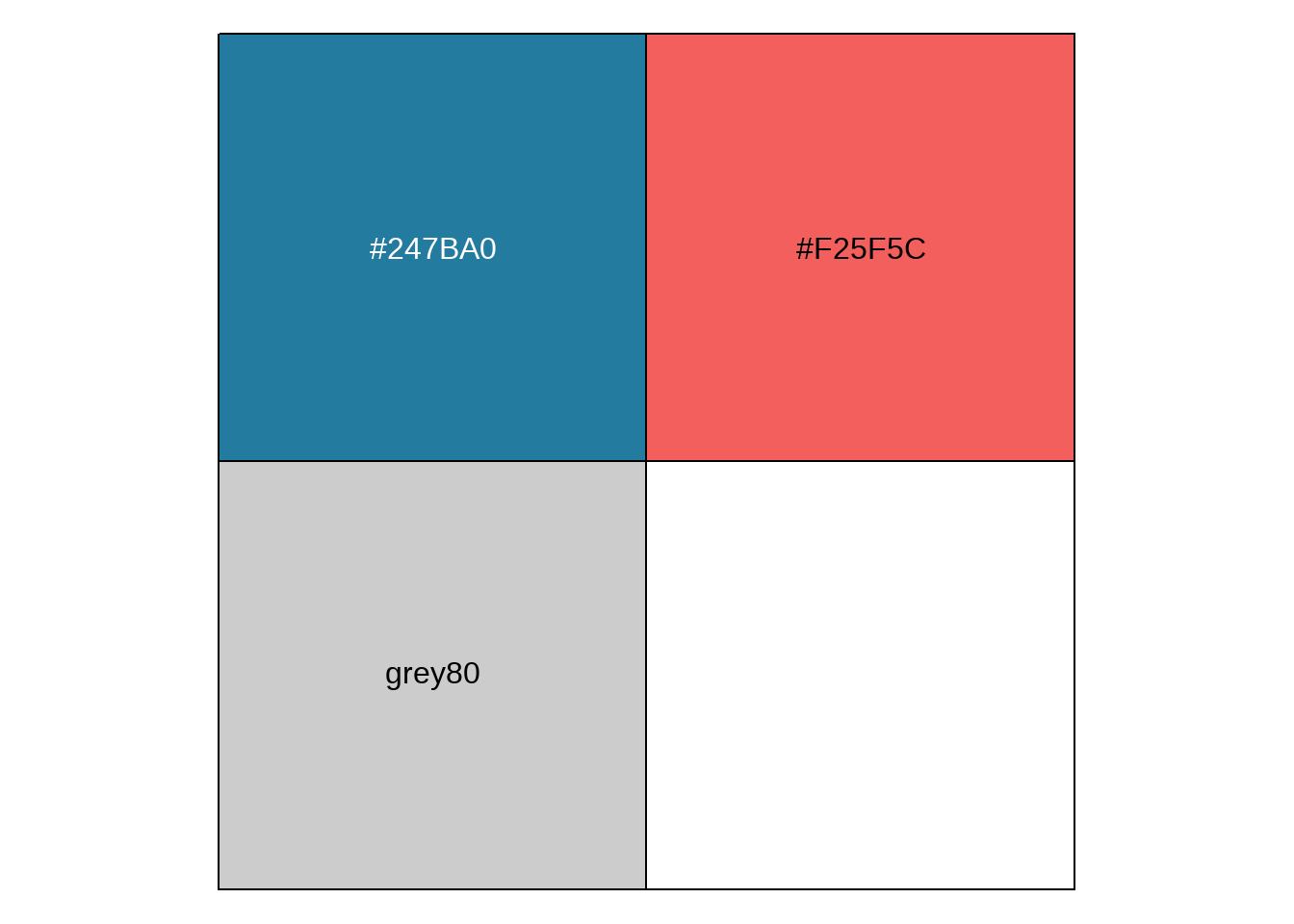
d %>%
ggplot(aes(x = Height, y = after_stat(count))) +
geom_density(
data = d %>% dplyr::select(-Gender),
aes(fill = "all people", color = "all people")
) +
geom_density(aes(color = Gender, fill = Gender)) +
facet_wrap(vars(Gender)) +
scale_fill_manual(name = NULL, values = density_colors) +
scale_color_manual(name = NULL, values = density_colors) +
theme_minimal() +
theme(legend.position = "bottom")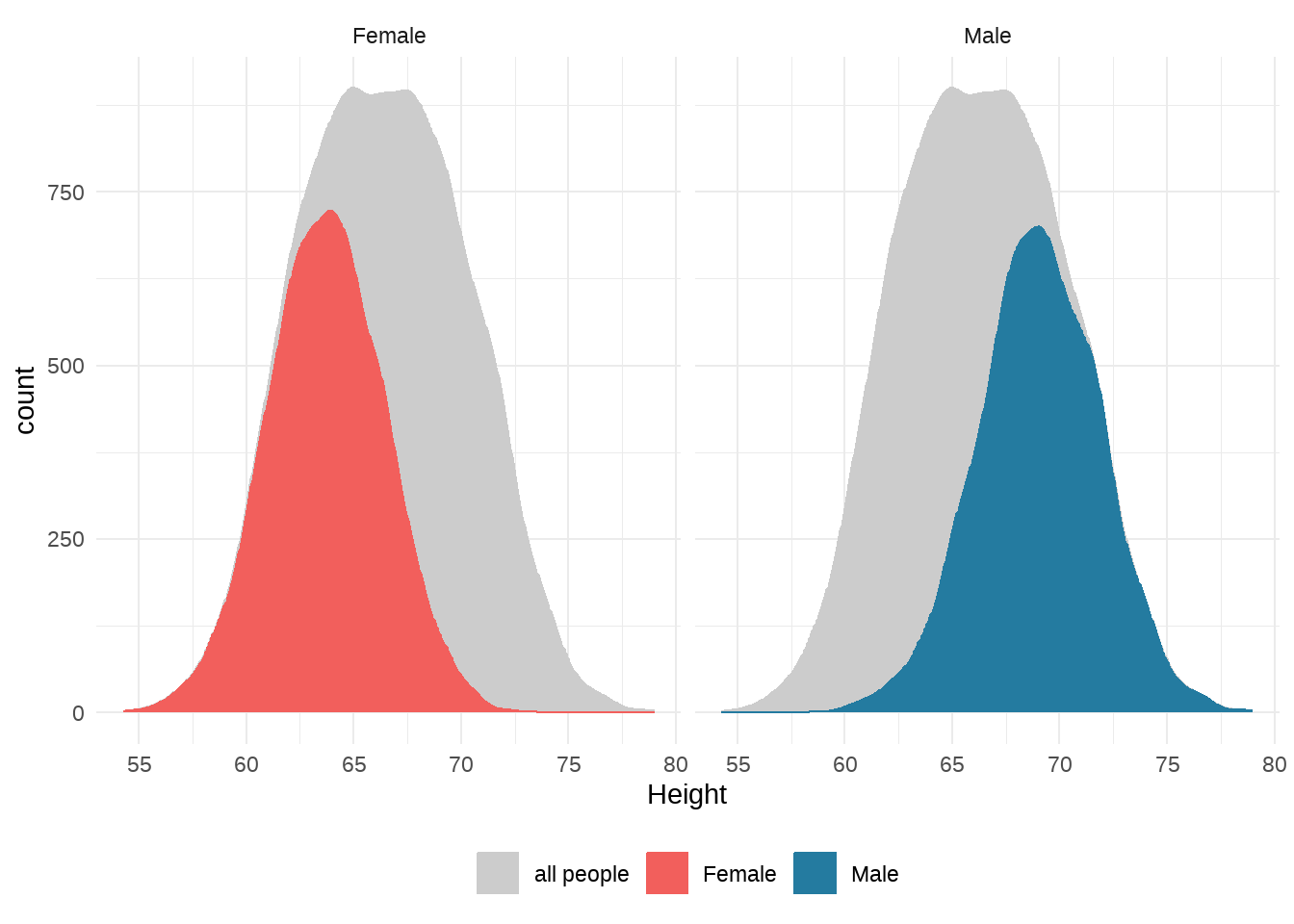
或者,用不同的主题风格
density_colors <- c(
"Male" = "#56B4E9",
"Female" = "#EF8A17",
"all participants" = "grey85"
)
d %>%
ggplot(aes(x = Height, y = after_stat(count))) +
geom_density(
data = function(x) dplyr::select(x, -Gender),
aes(fill = "all participants", color = "all participants")
) +
geom_density(aes(fill = Gender, color = Gender)) +
facet_wrap(vars(Gender)) +
scale_color_manual(name = NULL, values = density_colors) +
scale_fill_manual(name = NULL, values = density_colors) +
cowplot::theme_minimal_hgrid(16) +
theme(legend.position = "bottom", legend.justification = "center")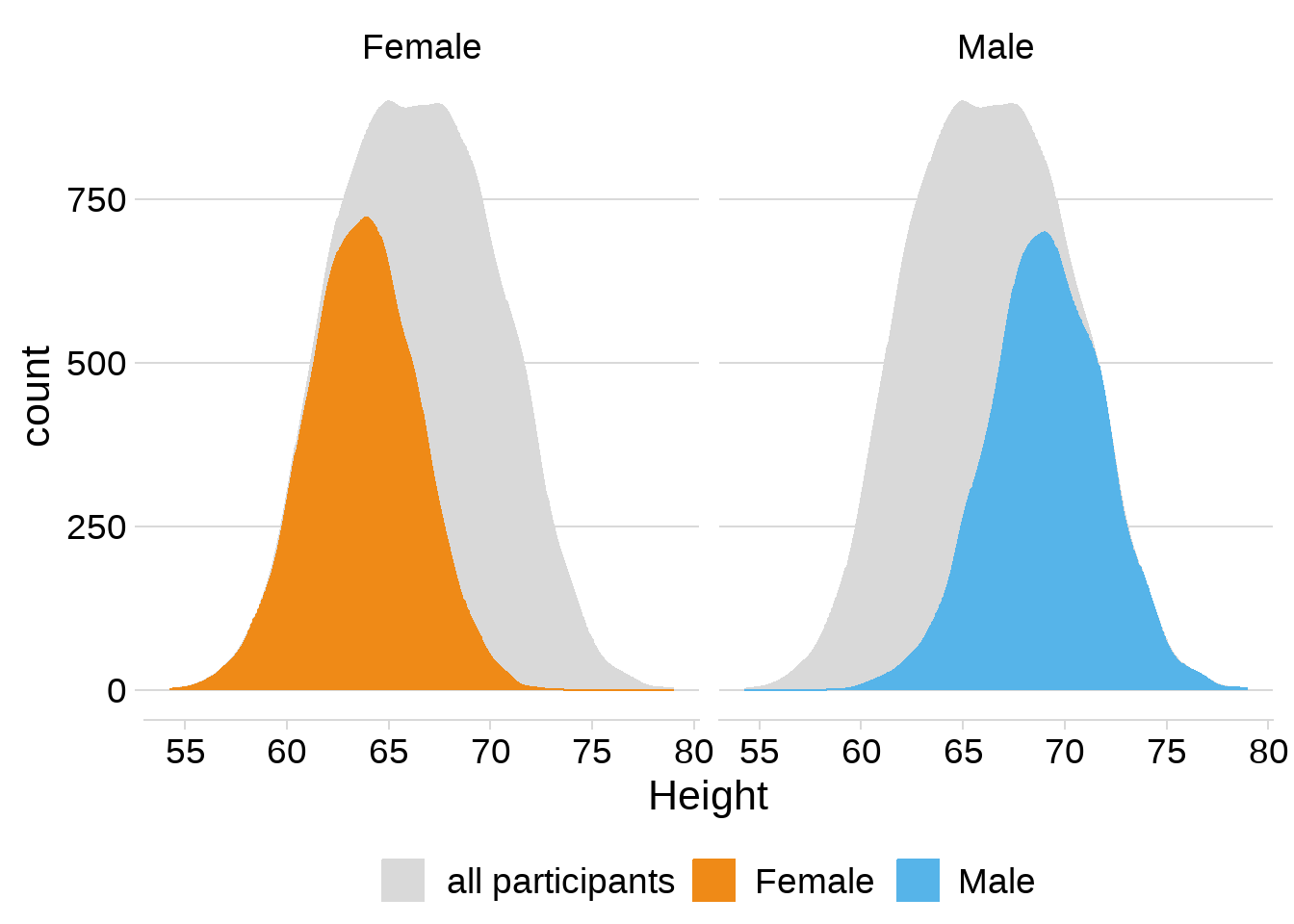
82.4 建模
82.4.2 建立身高与体重的线性模型
##
## Call:
## lm(formula = Weight ~ 1 + Height, data = d)
##
## Residuals:
## Min 1Q Median 3Q Max
## -51.934 -8.236 -0.119 8.260 46.844
##
## Coefficients:
## Estimate Std. Error t value Pr(>|t|)
## (Intercept) -350.73719 2.11149 -166.1 <2e-16 ***
## Height 7.71729 0.03176 243.0 <2e-16 ***
## ---
## Signif. codes: 0 '***' 0.001 '**' 0.01 '*' 0.05 '.' 0.1 ' ' 1
##
## Residual standard error: 12.22 on 9998 degrees of freedom
## Multiple R-squared: 0.8552, Adjusted R-squared: 0.8552
## F-statistic: 5.904e+04 on 1 and 9998 DF, p-value: < 2.2e-16
broom::tidy(fit)## # A tibble: 2 × 5
## term estimate std.error statistic p.value
## <chr> <dbl> <dbl> <dbl> <dbl>
## 1 (Intercept) -351. 2.11 -166. 0
## 2 Height 7.72 0.0318 243. 082.4.3 建立不同性别下的身高与体重的线性模型
## # A tibble: 4 × 6
## # Groups: Gender [2]
## Gender term estimate std.error statistic p.value
## <chr> <chr> <dbl> <dbl> <dbl> <dbl>
## 1 Female (Intercept) -246. 3.36 -73.3 0
## 2 Female Height 5.99 0.0526 114. 0
## 3 Male (Intercept) -224. 3.41 -65.8 0
## 4 Male Height 5.96 0.0494 121. 0
d %>%
ggplot(aes(x = Height, y = Weight, group = Gender)) +
geom_point(aes(color = Gender)) +
geom_smooth(method = lm)